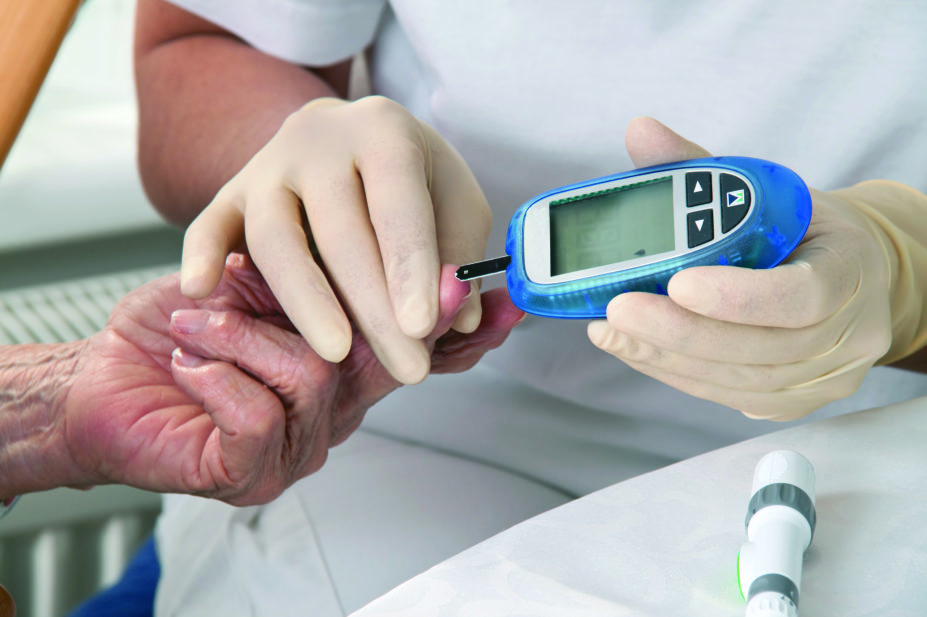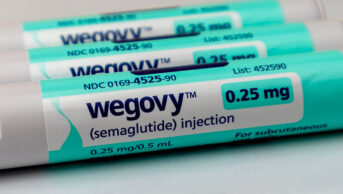
Shutterstock.com
New higher blood sugar targets are being recommended for people with type 2 diabetes by the American College of Physicians (ACP).
The organisation says that clinicians should aim to achieve a haemoglobin A1c (HbA1c) level of between 7.0% and 8.0% rather than the lower levels of between 6.5% and 7.0% that are recommended in other commonly adopted clinical guidelines.
The ACP, the national organisation for internal medicine physicians in the United States, based its new guidance on its review of the evidence from five clinical trials behind six type 2 diabetes guidelines – including guidelines developed by the National Institute for Health and Care Excellence (NICE) in the UK, which recommends an HbA1c target of between 6.5% and 7.0%.
The ACP also looked at guidelines from the Institute for Clinical Systems Improvement; the American Association of Clinical Endocrinologists and American College of Endocrinology; the American Diabetes Association; and the Scottish Intercollegiate Guidelines Network.
Writing in the Annals of Internal Medicine (online, 6 March 2018), the researchers said: “Collectively, these trials showed that treating to targets of 7.0% or less compared with targets around 8.0% did not reduce death or macrovascular events over about five to ten years of treatment but did result in substantial harms, including but not limited to hypoglycaemia.”
Looking at the evidence behind a target of below 6.5%, the researchers said: “No trials show that targeting HbA1c levels below 6.5% in diabetic patients improves clinical outcomes, and pharmacologic treatment to below this target has substantial harms.”
The researchers said it was important to consider the factors which influence guideline quality.
“Although many guidelines described benefits, adverse effects, and the strength and limitations of evidence or linked the evidence to the recommendation, they often inadequately described how they had considered or weighted these factors in developing the final recommendations,” they said.
“The guidelines frequently relied on selective reporting of studies or outcomes and focused on relative versus absolute effects and asymptomatic surrogate measures rather than patient-centered health outcomes.”
The NICE guideline for the management of adults with type 2 diabetes, last updated in May 2017, recommends an HbA1c target of 6.5% for adults whose diabetes is managed either by lifestyle and diet, or by lifestyle and diet combined with a single drug not associated with hypoglycaemia. For adults on a drug associated with hypoglycaemia, then an HbA1c target of 7.0% should be the target, according to NICE.
Philip Newland-Jones, a consultant pharmacist in diabetes and endocrinology specialist medicine at University Hospital Southampton NHS Foundation Trust, said the research “reminds clinicians of the importance of treatment individualisation”.
“For a number of years, the ADA has advocated an HbA1c target below 7.0% for the majority of patients,” Newland-Jones added, but said this figure can be adjusted according to a patient’s individual circumstances.
He explained that when therapy is started for type 2 diabetes, “we aren’t just looking for an HbA1c target, we are looking to preserve pancreatic function and delay the progression of that person’s diabetes”.
“We now have medications that we use for diabetes that also have been shown to reduce cardiovascular death in particular patients regardless of the HbA1c reduction and my concern is that when clinicians are told to accept a higher Hba1c – this will inevitably lead to further clinical inertia,” he said.
“It is well known in many fields of healthcare that when targets are set – inevitably only a small proportion of patients will achieve those targets, and sometimes they may be aspirational.”
Newland-Jones also said the NICE guidelines advise clinicians to individualise HbA1c treatment targets but should aim for less than 7.0% for those on medications that don’t cause hypoglycaemia and less than 7.5% for those on insulin or sulfonylureas.
“In 2015-2016, only 65% of patients with type 2 diabetes in England and Wales had an HbA1c below 7.5% and I would be concerned a headline that states to aim for 7.0%-8.0% will mean targets are inappropriately relaxed meaning a large proportion of patients would have HbA1c above 8.0%,“ he said.
“I also have concerns as it may lead to patients early on in the disease process, delaying starting therapy until HbA1c is above 8.0% which may have drastic implications for disease progression and micro/macrovascular complications.”
He explained that the “substantial harm” referred to in those with HbA1c less than 6.5% is for those patients taking medications that cause hypoglycaemia, such as insulin and sulfonylureas, where NICE already recommends aiming for a target of 7.5% in those individuals.
He added: “In those patients taking medications that do not cause hypoglycaemia, there are no harmful effects of having an HbA1c less than 6.5% and it is likely to slow disease progression. I think patients need to have an individualised target that takes account of the factors described above in the ADA guidelines, along with appropriate prescribing of medications that takes into consideration the likely benefit and harm to that person in those individual circumstances.”


